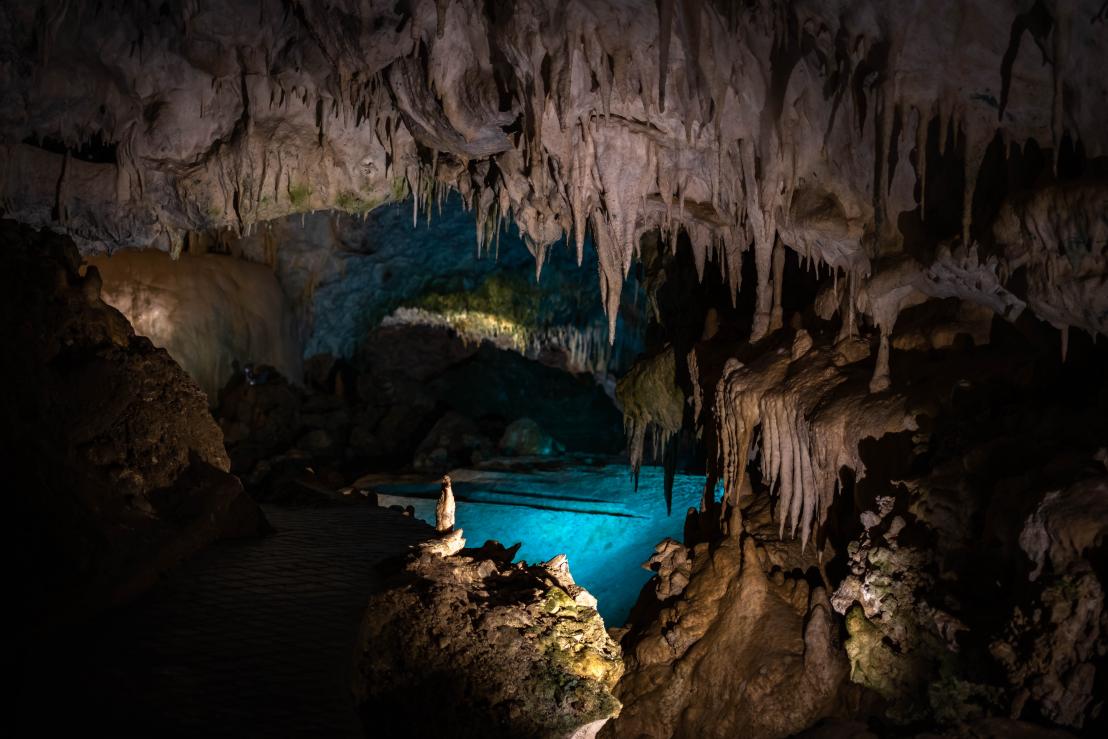As natural climate archives, the deposits found in caves can play an important role in our ability to understand – and predict – climate change.
Every family has those stories that are passed down from generation to generation. Some of them have to do with history, others about a particular individual. But many of them have to do with the weather.
Whether it be when the monsoons always arrive or what month brings the coldest weather, these stories contribute to society’s climate memory. ‘Because this information helps make climate predictable, it is very useful to, for example, a farmer planting crops,’ said Dr Sebastian Breitenbach, a palaeoclimatologist at Northumbria University.
The problem is that climate change is wreaking havoc on normal weather patterns, making our climate memory less reliable. ‘Historically, society can cope with a change in weather, such as a drought, that last just a couple of years,’ added Dr Breitenbach. ‘But when the disruption continues for too long, that’s when we tend to run into trouble.’
To avoid such trouble, society needs a climate memory that goes back not generations, but millennia.
And getting that type of memory means going underground.
On a quantitative quest
When it comes to accessing the Earth’s climate history, called paleoclimate information, caves have a lot to say.
Caves are rich with deposits like stalactites and stalagmites. Called speleothems, these deposits are formed as water slowly makes its way down from the surface.
‘Drip by drip, over the course of thousands, or even millions of years, these deposits grow, with each layer storing a record of their chemical composition,’ said Dr Breitenbach. ‘As a result, speleothems serve as excellent climate archives and are vital to understanding how climate varies and how the environment responds on seasonal to millennial timescales.’
To reconstruct past climate and environment, palaeoclimatologists use what are called proxy indicators, indirect measurements that allow them to detect variations in rainfall, vegetation, or extreme events like droughts.
So, what does this actually mean?
To find out, we asked Dr Breitenbach to explain: ‘Using proxies, I can tell you if 300,000 years ago the climate was warmer, colder, wetter or drier than today,’ he said. ‘What I can’t tell you is just how much warmer, colder, wetter or drier it was.’
To get this type of information, which is quantitative, Dr Breitenbach needs more complex proxies. Luckily, through the QUEST project, he’s helped develop a range of new proxies capable of extracting exactly this type of detailed information from speleothems.
For example, one of these new proxies looks at the specific chemical compounds that can be found in a cave deposit. ‘One of these compounds is only produced when a wildfire happens above the cave,’ remarked Dr Breitenbach. ‘When we find this compound in the speleothem, we can reconstruct when wildfires happened in the past, their severity, and their frequency.’
Dr Breitenbach and his team also developed proxies for identifying past changes in vegetation. ‘This type of quantitative information is crucial to making the speleothem record more useful to climate modellers and policy makers,’ he added.
Looking to the past to predict the future
Dr Breitenbach isn’t alone in his quest to derive more detailed information from the speleothem record. In fact, similar research is happening in caves across the globe.
‘Because reconstructing past climates is challenging, we are always looking for new, more reliable ways to extract information from geologic archives,’ said Anna Nele Meckler, a professor at the University of Bergen and a researcher with the FluidMICS project.
Prof Meckler is specifically interested in getting information about past temperatures from speleothems. That’s because, according to Prof. Meckler, having such information could teach us a lot about climate change and the impact that greenhouse gases have on our climate.
‘We want to understand how sensitive temperature was to past changes in atmospheric CO2, how temperature changes in different regions were connected, and how quickly these responses happened,’ she said.
To get this information, Prof Meckler and her team are developing a process that can determine the density of small amounts of water found in the speleothems. ‘Because water density is linked to the temperature at the point in time when the water was trapped in the rock, it can tell us a lot about how hot or how cold it is was at a specific point in time,’ she added.
Extending our climate memory
Although each are working in different caves and in different parts of the world, all three researchers are working to extend our climate memory.
‘As climate change is quickly moving us into unknown territory, we urgently need to better understand how today’s climate system might react,’ said Prof. Meckler. ‘At the very least, we can access past climate states and transitions and use this information to improve our ability to predict what lies ahead.’
‘If we don’t know the past, how can we assess how vulnerable we are to the future,’ asks Dr Breitenbach? ‘With the right techniques, speleothems can shed light on this past, giving us a fighting chance to predict – and adapt to – what’s coming.’
The research in this article was funded by the EU. If you liked this article, please consider sharing it on social media.

